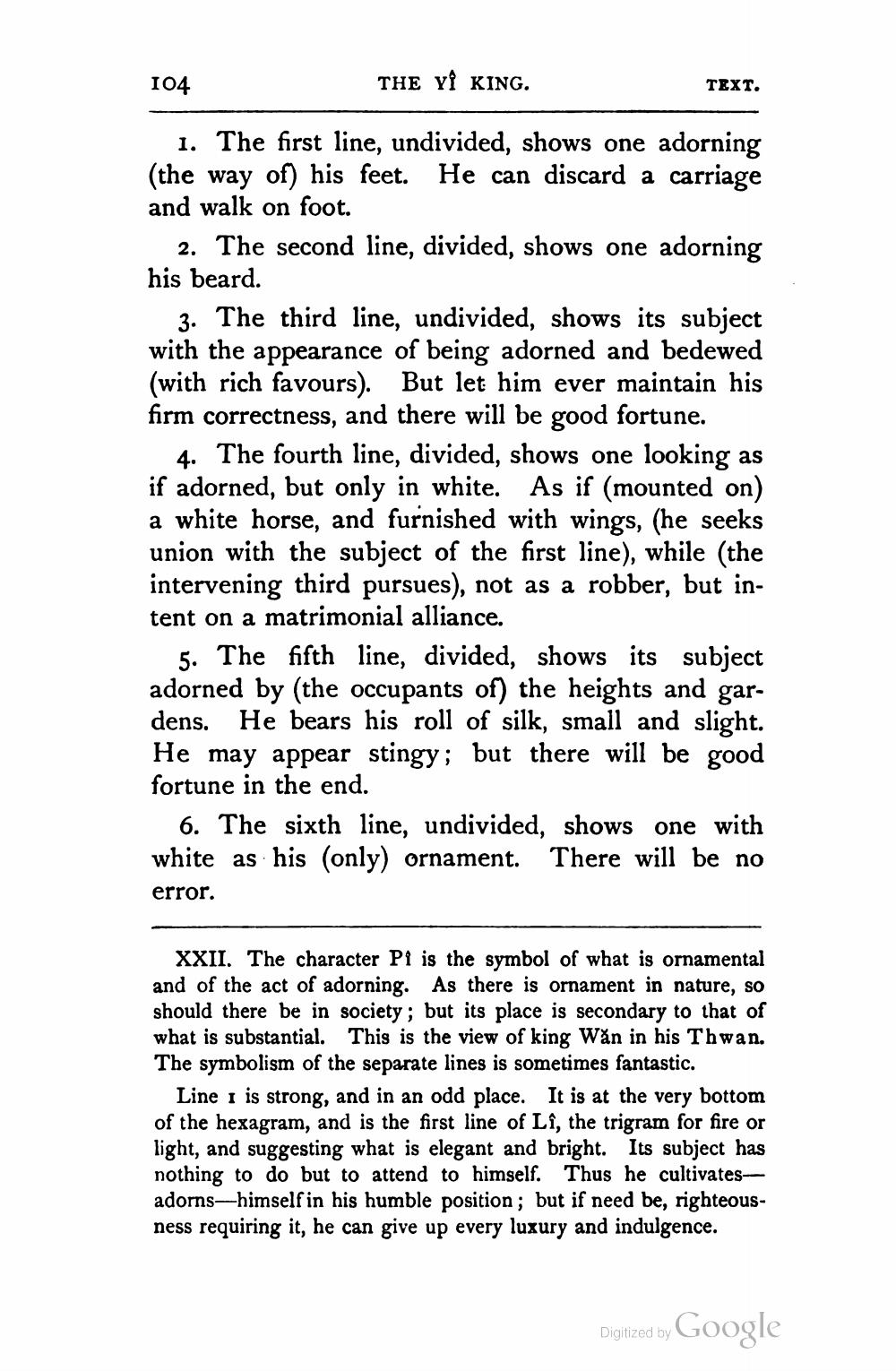________________
104
THE YI KING.
TEXT.
1. The first line, undivided, shows one adorning (the way of his feet. He can discard a carriage and walk on foot.
2. The second line, divided, shows one adorning his beard.
3. The third line, undivided, shows its subject with the appearance of being adorned and bedewed (with rich favours). But let him ever maintain his firm correctness, and there will be good fortune.
4. The fourth line, divided, shows one looking as if adorned, but only in white. As if (mounted on) a white horse, and furnished with wings, (he seeks union with the subject of the first line), while (the intervening third pursues), not as a robber, but intent on a matrimonial alliance.
5. The fifth line, divided, shows its subject adorned by (the occupants of) the heights and gardens. He bears his roll of silk, small and slight. He may appear stingy; but there will be good fortune in the end.
6. The sixth line, undivided, shows one with white as his (only) ornament. There will be no error.
XXII. The character Pi is the symbol of what is ornamental and of the act of adorning. As there is ornament in nature, so should there be in society; but its place is secondary to that of what is substantial. This is the view of king Wăn in his Thwan. The symbolism of the separate lines is sometimes fantastic.
Line 1 is strong, and in an odd place. It is at the very bottom of the hexagram, and is the first line of Lî, the trigram for fire or light, and suggesting what is elegant and bright. Its subject has nothing to do but to attend to himself. Thus he cultivates-- adoms-himself in his humble position; but if need be, righteousness requiring it, he can give up every luxury and indulgence.
Digitized by Google




